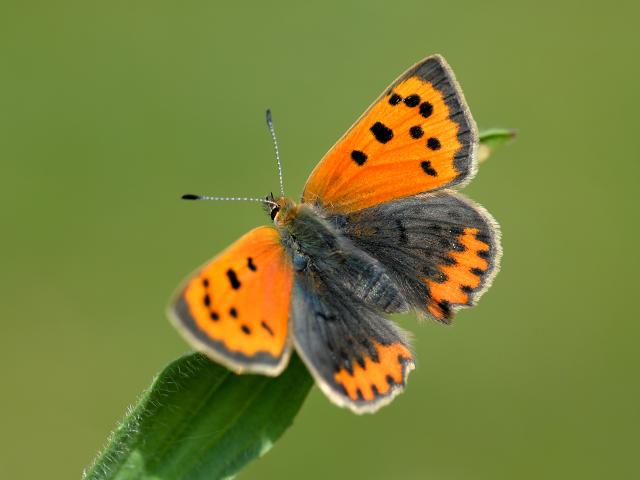
Wildlife lovers across Scotland are being asked to look out for the Small Copper butterfly this summer, amidst fears it could be struggling.
The wildlife charity Butterfly Conservation (BC) is asking people in Scotland to keep an eye out for a small but brightly-coloured butterfly, the Small Copper. Small Copper populations have fallen by a third in Scotland over the past decade, and sightings from members of the public are important in helping researchers find out what’s happening to this beautiful butterfly. Now, members of the public can easily send in their sightings of Small Coppers to a new survey of the species.
Project Officer Anthony McCluskey said: ‘Small Coppers are delightful little butterflies, and their declines in Scotland are a great concern for us. Finding out more about where they are can help us to conserve them. Observing wildlife is known to have a wide range of mental health benefits. This can be a mindful activity during these uncertain times and one which will help contribute to scientific research too.’

The butterfly can be seen in gardens and parks, and also found along paths and cycle routes so it may be seen on daily exercise outings. The charity is urging people to respect Government advice on social distancing by only recording the butterfly if they happen to find it as they take their normal exercise, and not to travel anywhere to find it.
Small Coppers can often be seen basking in sheltered sunny places, especially where there is some bare ground. Their caterpillars feed on wild sorrels, which are the smaller relatives of the Docks that people use to relieve nettle stings. With their wings open they are a little larger than a 50p coin, but they are easily overlooked as they are rarely seen in large numbers. The upper sides of the wings have distinctive bright orange and black markings.
Depending on the spring weather the butterfly can emerge in Scotland between the middle of April and middle of June, disappearing until late summer, when a second brood emerges. You can report your sighting of Small Coppers at www.butterfly-conservation.org/scottishsmallcopper.
This survey is being supported by Scottish Natural Heritage and the National Lottery Heritage Fund, through the Helping Hands for Butterflies Project.
Butterfly Conservation is the UK charity dedicated to saving butterflies, moths and our environment. Our research provides advice on how to conserve and restore habitats. We run projects to protect more than 100 threatened species and we are involved in conserving hundreds of sites and reserves. www.butterfly-conservation.org
Butterfly Conservation has more than 2200 members in Scotland www.butterfly-conservation.org/scotland
We work closely with local communities, landowners, the Scottish Government, Scottish Natural Heritage and other conservation partners, to safeguard Scotland’s butterflies, moths and their habitats.
About the Helping Hands for Butterflies Project
The Helping Hands for Butterflies Project received a grant £74,200 from the National Lottery Heritage Fund, with further funding being provided by Scottish Natural Heritage. The project aims to work with volunteers across Scotland to create and maintain habitats for butterflies, with a focus on central Scotland. Volunteers are also being trained to identify and record butterfly populations.

